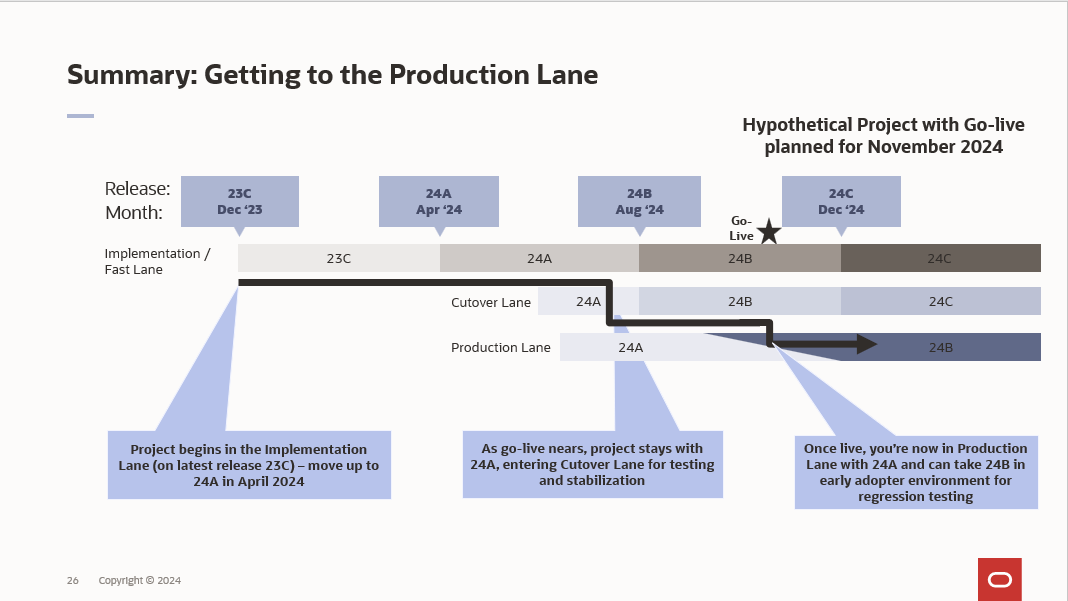The Oracle Utilities Cloud Model
The Oracle Utilities Cloud Model offers mission critical enterprise systems as "Software-as-a-Service" (SaaS) services and has been designed to meet the special needs of utilities to minimize customization, maximize production stability, and retain the benefits of using fully updated software in a SaaS implementation.
New General Availability (GA) software releases are provided three times a year (in other words, every four months) to introduce new features and functions. The significant features are designed to be 'opt-in', and we encourage every customer to make use of these features to reduce customizations. Implementing customers are required to take new General Availability releases promptly until go-live is on the horizon (no more than three months away), while live customers are required to take each subsequent release in order. Skipping one or more releases is not allowed.
For each General Availability release, Maintenance Packs (MPs) are provided each month for the first six months that includes the General Availability release month. For the first three months after a General Availability release, Maintenance Packs are mandatory and we do not allow any live production environments to update to the release during this period. For the next two maintenance pack months, we limit patches to enable go-lives and production upgrades, and customers must not fall further than two months behind to ensure quality of service. In the last five months of support for a release, application patching is optional while platform updates continue monthly until version end of life; in other words, there are no planned monthly updates though a mandatory emergency patch is possible. All customers must plan to update to the next GA release prior to the end of life date as published on the Oracle Utilities Release Calendar.
Oracle does not allow customers to remain on an unsupported (non-GA) release that is past the end of life date published in the Oracle Utilities Release Calendar. If you do not upgrade prior to the published end of life date, Oracle may force-upgrade any unsupported environments (including Production). You will be notified of upcoming release end of life dates and will also receive advance notification of any potential force-upgrades that need to occur.

The above illustration is a diagram of the Implementation/Fast, Cutover, and Production lanes The black arrow indicates the path of a hypothetical project through implementation to production.
The next sections describe in more detail the policies Oracle Utilities has adopted to support both implementing customers and live customers.